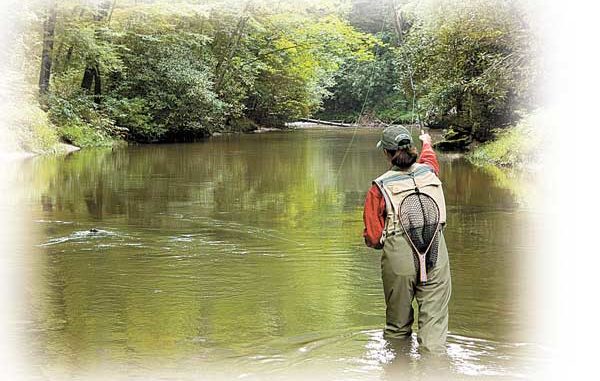
A vast majority of the food a trout eats is below the water’s surface. As fly anglers, we love the sight of a trout taking a fly on top. It’s exciting and even a little classy, but the odds favor the fisherman who fishes down deep in the water current. It’s the fishing version of golf’s phrase, “Drive for show and putt for dough.”
During late summer and fall, when insect hatches are infrequent, this is even more true. Trout, like all fish, are opportunistic feeders and will take an easy meal over an equally tasty but more difficult one. Rising to the water’s surface is a risky endeavor for any fish, and the nutrients gained by some tiny insect are nearly offset by the energy needed to pull off the maneuver. The risk-reward equation favors sub-surface feeding, and for the angler, this means fishing nymphs deep to where the trout are holding.
A nymph is an artificial fly that imitates the subsurface stages of an aquatic insect — usually a caddis fly, mayfly, or stonefly.
Nymphs are offered in either the weighted or non-weighted variety. Weighted nymphs sink faster but exhibit less natural movement when fished near the stream bottom. Non-weighted flies bounce and dance along the rocks like a real insect that’s been dislodged, and they can be fished deep by having a split shot or two attached to the leader a foot or so from the fly.
Trout in South Carolina’s mountain regions are opportunistic feeders, and any fly that looks and acts like food will probably be successful. This is particularly true in early autumn when the water begins to cool and fish feed more aggressively. This is an act of desperation, as the trout sense the change and feel the need to fatten up before winter.
More important than fly selection is the fly’s action in the water. Flies that tumble and bounce along the bottom of the river or stream do so at the same rate as the water itself — no faster or slower. This is called a drag-free or dead drift. Good line control is essential to avoiding that dreaded “drag” — a term describing how the floating section of the fly line pulls the fly faster than the water current or slows it down. An unnatural drift will turn a fish off faster than anything else you can do.
A simple but effective technique for fishing a nymph is an upstream cast with a dead drift. The cast should be made well upstream of the suspected lie of the trout and the fly allowed to sink near the bottom before the fish is reached. The take will be subtle, yet noticeable, as it’s telegraphed through an unnatural movement in the line or the strike indicator.
Unlike natural bait, a trout will not hold the fly very long before spitting it out. This can all happen in a fraction of a second. A firm hookset must follow a take immediately, or you will come up empty handed.
By this time of year, trout are in beautiful shape and fight harder than any other tim. Hopefully, they’ve had a full season of eating well, and the temperature change seems to brighten these outrageously colored fish.
Using nymphs will catch fish regularly throughout the year, but it’s late summer and early fall when they are the most obvious choice in technique. What nymphing lacks in style points, it more than compensates for in the bend in your fly rod. For many, this is the last opportunity to get some last-minute fishing in before football and hunting season begins in earnest!



Be the first to comment